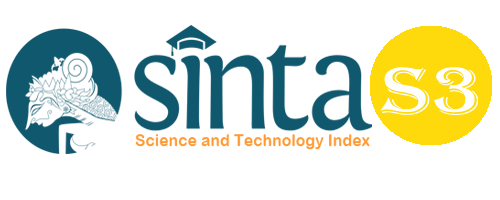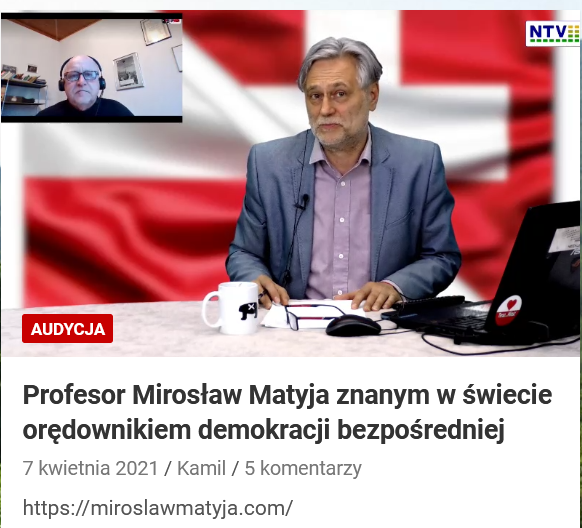The Effect of Third Party Funds and Non-Performing Financing on the Performance of Islamic Banks (Case Study at PT Bank Muamalat Indonesia Tbk)
Abstract
PT Bank Muamalat Indonesia Tbk. (“Bank Muamalat Indonesia”) is a financial institution that functions as a collector of funds from the public in the form of deposits and distributes them back to the public in the form of financing based on sharia principles. Sources of funds originating from public third party funds are in the form of Wadi'ah Current Accounts, Wadi’ah and Mudharabah Savings and Mudharabah Deposits. As a financial institution, the management of third party funds and redistribution in the form of financing will determine the bank's operating income, which in turn will affect the bank's financial performance which in this study is seen from profitability as measured by the Return on Assets ("ROA") ratio. The purpose of this study is to find out the influence of Third Party Funds ("TPF") and Non-Performing Financing ("NPF") on the financial performance of Bank Muamalat Indonesia. The type of research used is quantitative research, which is a type of research based on data analysis that can be calculated or is in the form of numbers. Data were collected through literature studies and 7-year financial reports of Bank Muamalat Indonesia, starting from 2014 to 2020. The results showed that 35.3% of the financial performance of Bank Muamalat was influenced simultaneously by TPF and NPF. Another variable of 64.7% that affects financial performance is not included in this study.
Keywords
Full Text:
PDFReferences
Adnan, A., Ridwan, R., & Fildzah, F. (2016). Pengaruh Ukuran Bank, Dana Pihak Ketiga, Capital Adequacy Ratio, dan Loan To Deposit Ratio Terhadap Penyaluran Kredit Pada Perusahaan Perbankan yang Terdaftar Di Bursa Efek Indonesia Tahun 2011-2015. Jurnal Dinamika Akuntansi Dan Bisnis, 3(2), 49–64.
Alanshari, F., & Marlius, D. (2018). Prosedur Pemberian Kredit KPR Pada PT. Bank Tabungan Negara (Persero) TBK Cabang Pembantu Bukittinggi. INA-Rxiv.
Ali, H., & Miftahurrohman, M. (2016). Determinan yang mempengaruhi pembiayaan Murabahah pada perbankan syariah di Indonesia. Esensi: Jurnal Bisnis Dan Manajemen, 6(1), 31–44.
Arrazy, Z. (2015). Pengaruh DPK, FDR dan NPF Terhadap Pertumbuhan Aset Bank Umum Syariah (BUS) di Indonesia Tahun 2010-2014.
Azhlia, D. L. (2020). Pengaruh NPF, CAR, BOPO, Inflasi dan Kurs Rupiah Terhadap Return On Assets (Studi Kasus Pt Bank Muamalat Indonesia, Tbk. Periode 2015-2019). IAIN Purwokerto.
Darsita, I. (2020). Analisis CAR, NPF, BOPO dan FDR Untukmengukur Tingkat Kesehatan, Serta Pengaruhnya Terhadap ROA (Studi Kasus Pada Bank Umum Syariah/Bus yang terdaftardi BEI). Jurnal Semarak, 3(1), 96–113.
Farild, M., & Bakhtiar, F. (2019). Analisis Kinerja Keuangan Perbankan Syariah Sebelum Dan Sesudah Implementasi Pembatasan Financing To Value (FTV). Jurnal Iqtisaduna, 5(2), 281–286.
Fauziah, K. (2013). Analisis pengungkapan tanggung jawab sosial perbankan syariah di indonesia berdasarkan islamic social reporting indeks. Jurnal Dinamika Akuntansi, 5(1).
Fure, J. A. (2016). Fungsi Bank Sebagai Lembaga Keuangan Di Indonesia Menurut Undang-Undang Nomor 10 Tahun 1998 Tentang Perbankan. Lex Crimen, 5(4).
Hasnati, H., Dewi, S., & Utama, A. S. (2019). Perbandingan Prinsip Good Corporate Governance pada Bank Konvensional dan Bank Syariah dalam Sistem Hukum di Indonesia. Mizan: Journal of Islamic Law, 3(2), 197–208.
Heryati, A. (2016). Pengaruh Kompensasi Dan Beban Kerja Terhadap Loyalitas Karyawan Di Departemen Operasi Pt. Pupuk Sriwidjaja Palembang. Jurnal Ecoment Global: Kajian Bisnis Dan Manajemen, 1(2), 56–75.
Hidayat, A., & Sunarsi, D. (2020). Faktor-Faktor Yang Mempengaruhi Dana Pihak Ketiga Dan Dampaknya Terhadap Profitabilitas (Survey Pada Bpr Syariah Di Jawa Barat Tahun 2014–2017). Jurnal Proaksi, 7(1), 54–65.
Ilyas, R. (2018). Manajemen Permodalan Bank Syariah. BISNIS: Jurnal Bisnis Dan Manajemen Islam, 5(2), 323–338.
Jati, I. R. S. (2018). Pengaruh Npf, Fdr, Ni, Bopo & Car Terhadap Pertumbuhan Laba Bank Umum Syariah Di Indonesia. Jakarta: Fakultas Ekonomi dan Bisnis UIN Syarif Hidayatullah Jakarta.
Juliana, H. (2021). Analisis Faktor Terhadap Minat Nasabah Menggunakan Tabungan Wadiah Barokah di Bank Syariah Adam Kota Bengkulu. IAIN Bengkulu.
Machmud, A., Rukmana, H., Wibi Hardani, S. T., Hayati, Y. S., & Sallama, N. I. (2010). Bank syariah: teori, kebijakan, dan studi empiris di Indonesia. Erlangga.
Mawaddah, N. (2015). Faktor-faktor yang mempengaruhi profitabilitas bank syariah. Jurnal Etikonomi, 14(2).
Meilita, N. (2011). Pengaruh Sumber Dana Pihak Ketiga Terhadap Profitabilitas Pada Bank Syariah Mandiri Cabang Cirebon. IAIN Syekh Nurjati Cirebon.
Ningrum, P. A., et al. (2020). The Potential of Poverty in the City of Palangka Raya: Study SMIs Affected Pandemic Covid 19. Budapest International Research and Critics Institute-Journal (BIRCI-Journal) Volume 3, No 3, Page: 1626-1634
Nursani, L. (2020). Pengaruh Kepemilikan Intitusional, Intensitas Aset Tetap, Konservatisme Akuntansi, Leverage, Pertumbuhan Penjualan dan Ukuran Perusahaan Terhadap Tax Avoidance: Studi Pada Perusahaan Manufaktur yang Terdaftar di Bursa Efek Indonesia Tahun 2014-2018. Universitas Islam Negeri Maulana Malik Ibrahim.
Paparang, F. (2016). Kegiatan Bank Dalam Penghimpunan Dana Masyarakat. Jurnal Ilmu Hukum, 3(9), 11–19.
Rahmah, N., & Ridwan, M. (2021). Pengaruh Return On Assets (ROA) dan Returnon Equity (ROE) Terhadap Capital Adequacy Ratio (CAR) Pada PT. Bank Sumut Syariah Kcpsy Kotabaru Marelan. JURNAL AL-QASD ISLAMIC ECONOMIC ALTERNATIVE, 2(2), 154–162.
Risal, T. (2019). Peningkatan peran perbankan syariah dengan menggerakkan sektor riil dalam pembangunan. Accumulated Journal (Accounting and Management Research Edition), 1(1), 36–47.
Saleh, A., Mujahiddin. (2020). Challenges and Opportunities for Community Empowerment Practices in Indonesia during the Covid-19 Pandemic through Strengthening the Role of Higher Education. Budapest International Research and Critics Institute-Journal (BIRCI-Journal). Volume 3, No 2, Page: 1105-1113.
Sihombing, E. H., Nasib. (2020). The Decision of Choosing Course in the Era of Covid 19 through the Telemarketing Program, Personal Selling and College Image. Budapest International Research and Critics Institute-Journal (BIRCI-Journal) Volume 3, No. 4, Page: 2843-2850.
Sugiyono, D. (2013). Metode penelitian pendidikan pendekatan kuantitatif, kualitatif dan R&D. Alfabeta.
DOI: https://doi.org/10.33258/birci.v4i4.3513
Article Metrics
Abstract view : 98 timesPDF - 66 times
Refbacks
- There are currently no refbacks.

This work is licensed under a Creative Commons Attribution-ShareAlike 4.0 International License.

This work is licensed under a Creative Commons Attribution-ShareAlike 4.0 International License.

_.gif)

















_.gif)



